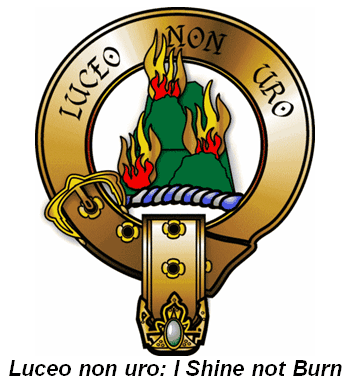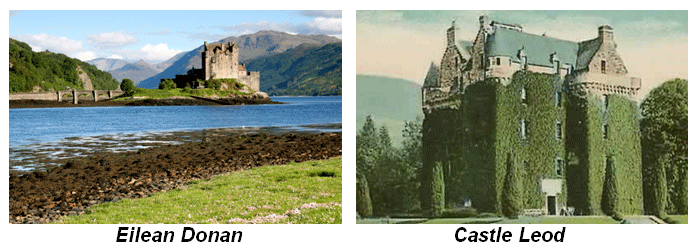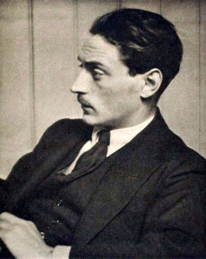MacKenzie

-
Clan Territory:
At the height of their influence, the chiefs of the Mackenzie clan lead the 4th most powerful clan in Scotland. Their lands extended from the Island of Lewis in the west, though to Ross on the east coast of the mainland. -
Clan Chief:
Traditionally, MacKenzie of Seaforth, chief of the clan, was known as 'Caberfeidh', meaning deer's antlers. The direct male line of the Mackenzie chiefs became extinct after the death of Francis Mackenzie Humberston in 1815 - the last Mackenzie Lord Seaforth. The Brahan Seer famously foretold the tragic circumstances of his death two centuries earlier. He predicted that the last of the chiefs would die a deaf mute. Mackenzie, whose sight and hearing were destroyed by scarlet fever, eerily fulfilled the ancient prophecy. He outlived his four sons, and the direct line died out.
In 1979, Roderick Grant Francis Blunt-Mackenzie, 4th Earl of Cromartie legally changed his surname to Mackenzie and was appointed chief of Clan Mackenzie by the Lord Lyon King of Arms. Although not descended from a Mackenzie in the male line, he inherited his titles through his mother who was distantly related to the old Mackenzie Lords of Seaforth.
-
Clan Castles:
-

The first castle to be associated with the Mackenzie clan is Eilean Donan castle on Loch Duich in Kintail. Latterly, the power of the clan shifted east and the seat of the Mackenzie chiefs was at Brahan, which was requisitioned during World War Two. The condition of the building deteriorated to such an extent that it was completely demolished in the 1950s. The home of the present Clan chief is castle Leod in Strathpefer.
Eilean Donan castle lies on the shores of Loch Duich in the heart of Kintail. It was here during the late13th century that the MacKenzie story begins, when Coineach MacCoineach - Kenneth son of Kenneth– gave his name to the clan: which in Gaelic means son of the fair one.
-
Clan Tartan:

MacKenzie Tartan -
Clan History:
The Mackenzies were once the most powerful clan in the north of Scotland. They got to the top by acting as Royal agents for a succession of Scottish kings – being in effect the monarchy’s strong men in the north. Centuries of Royal patronage, intrigue and ruthless ambition eventually delivered the Mackenzies an empire that stretched from Scotland’s east coast to the Hebrides in the west. But the growth of Mackenzie power nearly always came at the expense of other clans – especially the Macleods of Lewis.
Back in the early 1600s, Lewis along with many other Hebridean islands, was considered almost ungovernable; and the Macleods were a particular thorn in the side of King James 6th, who was desperate to pacify this turbulent part of his kingdom. James VI had a passionate dislike for Highlanders and for Gaelic culture. He saw them as mad, bad and barbarous: the very antithesis of civilised society. But because of the remoteness of the Highlands from the Government in Edinburgh, the king was forced to use clans with influence to exercise Royal authority.
So it was with Royal blessing that Chief Colin MacKenzie, invaded Lewis with an army of 700 clansmen. Determined to grab Macleod lands, Colin MacKenzie went on a bloody rampage, sweeping all before him in a vicious campaign. The war waged by the invading Mackenzies forced the Macleods to retreat to their fortress on the rocky island of Bearneray. No doubt they felt safe here. Bearneray had withstood many sieges, but the MacKenzie clan chief was ruthless as well as wily.
Not all the Macleods had been able to reach the safety of the fortress, and Colin MacKenzie now saw his opportunity. The Macleod stragglers included women and children. Mackenzie herded these unfortunates together and rowed them out to a rocky island not far from the fortress of Birsay. Here they were abandoned to the incoming tide.
Of course, the Macleods, who could see what was happening from their fortress were faced with a stark and terrible choice. They could either abandon their position and save their loved ones, or could watch them drown. And as the cries of their wives and children grew louder and louder, they were really faced with no choice but to surrender to the MacKenzies who went on to dominate the whole of Lewis.
Loyalty to the Stuart monarchy seems to have been the default position of the chiefs of the MacKenzie clan. They supported Mary Queen of Scots in her short and troubled reign, and became fervent Jacobites after the Stuart dynasty was forced into exile in 1688. As a consequence, the crown forfeited Mackenzie estates after the failed Jacobite rebellion of 1746. Thereafter, a period of reconciliation ensued, followed by cultural assimilation, which saw the once proud Mackenzie chiefs become British aristocrats.
Filmed on location to the highest standards the Galloglas DVD, MacKenzie features unique stories that interweave romance, adventure, bravery and betrayal, set against a stunning landscape. This DVD is not yet available; if you would like to be informed of the release date please email alexandria@greatscottishclans.com.
-
Famous MacKenzies:
Compton MacKenzie – author of popular novels, of which Whisky Galore is the most famous. It was made into a film of the same name in 1949. He also penned Monarch of the Glen, which became a successful Television series in the 2000s.

Compton MacKenzieSir Alexander Campbell Mackenzie (1847-1935 - Principal of the Royal Academy of Music in London. His enormous compositional output is distinguished by its high degree of craftsmanship and flair. Mackenzie's greatest work for solo piano is the single-movement "Fantasy" in E flat.
Alexander Mackenzie - explorer. In 1789, he discovered Canada’s longest river, which is named after him.
-
And finally:
The mysterious and legendary figure of Coinneach Odhar (or Kenneth Mackenzie) – also known as the Brahan Seer: his legendary prophecies are said to have foretold the end of the Mackenzie dynasty and the collapse of highland culture. This highland Nostradamus came into the possession of a special “seeing stone”, which enabled him to look into the future.
Having become famous as a diviner and wit, he was invited to Brahan castle to work as a labourer for the Mackenzie chief. This led to dramatic and tragic sequence of events, leading to the barbaric murder of the seer. Lady Seaforth asked the Seer if her husband, who was in France, was well. The Seer told her that her husband was more than well. He was in the arms of a beautiful Frenchwoman! The horrified Lady Seaforth’s reaction was to blame the messenger. She ordered the Brahan Seer to be burned to death in a barrel of tar.

Help the King
MacKenzie of Kintail / Seaforth Highlanders' Badge